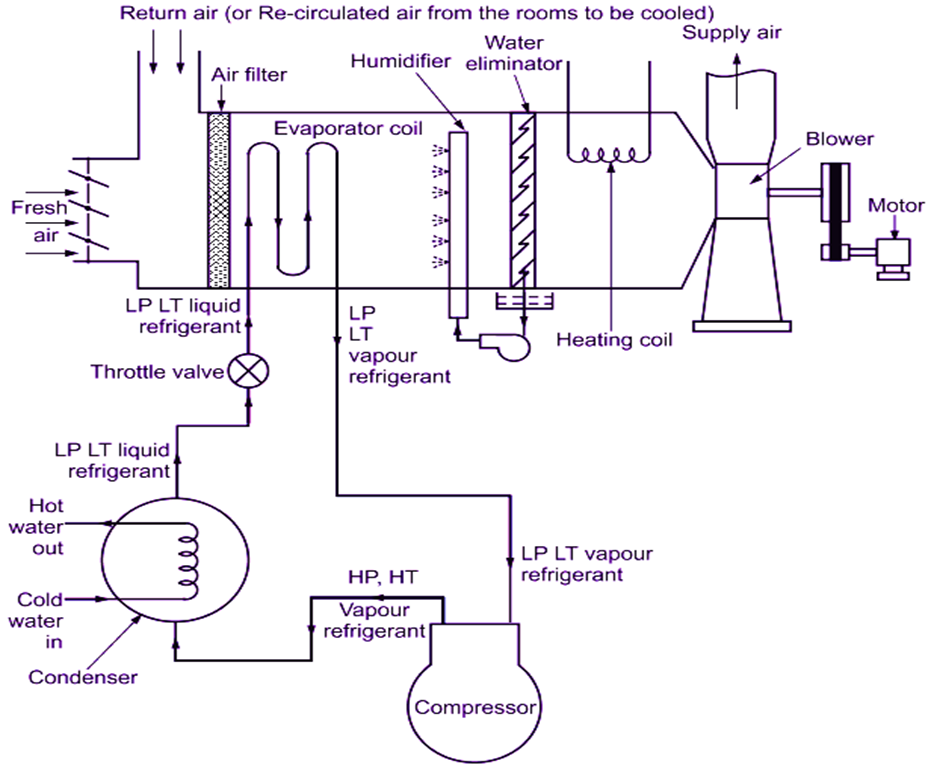In a central station air conditioning system, all the components of the system are grouped together in one central room and conditioned air is distributed from the central room to the required places through extensive duct work. The centra air conditioning system is generally used for the load above 25 tonnes of refrigeration and 2500 m3 /min of conditioned air.
The whole system can be divided into three parts,
- Plant room, which includes compressor, condenser and motor.
- Air handling unit room (AHU room).
- Air distribution system (Ducting).
The plant room is located away from room to be air conditioned. Other components are grouped together in a AHU and conditioned air is circulated through air distribution system i.e. ducting with the help of fan or blower to the room to be air conditioned. As shown in Fig. 1, the air, which is to be conditioned, is directly allowed to flow over the evaporator coil. Low pressure and low temperature refrigerant passing through evaporator coil absorbs heat from the air. Thus, the air gets cooled.

Fig. 1: Central air conditioning system
When several rooms in the building are to be air conditioned at approximately same temperature and relative humidity, then central air conditioning system is chosen instead of unitary air conditioning. This type of system is used for load above 25 TOR.
Types of Central Air Conditioning System
There are two types of central air conditioning systems.
Direct type central air conditioning system
- In this system, the air from the space to be air conditioned is circulated over the cooing coil (i.e. evaporator coil) of a refrigerant plant, in which, the low pressure liquid refrigerant is boiling.
- The latent heat of vapourization for the liquid refrigerant is taken from the air being circulated over the coil. Due to rejection of heat, the air gets cooled.
- This type of direct central air conditioning system is also known as ‘Direct Expansion (DX) System’.
Indirect type central air conditioning system
- In this system, chilled water or brine from the refrigeration plant is circulated through the cooling coil (i.e. evaporator coil) located in the air handling unit to cool and dehumidify the room
- This type of direct central air conditioning system is also known as ‘Central Chilled Water (or Brine) System’.
Advantages of Central Air Conditioner
- Low investment (capital) cost per unit of refrigeration as compared to total cost of separate units.
- Space occupied is less as compared to a room conditioner unit, which needs to be placed in the room.
- Better accessibility for maintenance.
- The running cost is less per unit of refrigeration.
- Noise and vibration troubles are less to the people in air conditioned places, as the air conditioning plant is far away from the air conditioned places.
- The exhaust a-r can be returned and maximum possible quantity of exhaust air is recirculated again, which reduces the cost of refrigeration.
Disadvantages of Central Air Conditioner
- Central air conditioner results in large size ducts, which are cost y and occupy large space.
- Though insulation is provided, thermal losses are likely to occur due to long ducting.